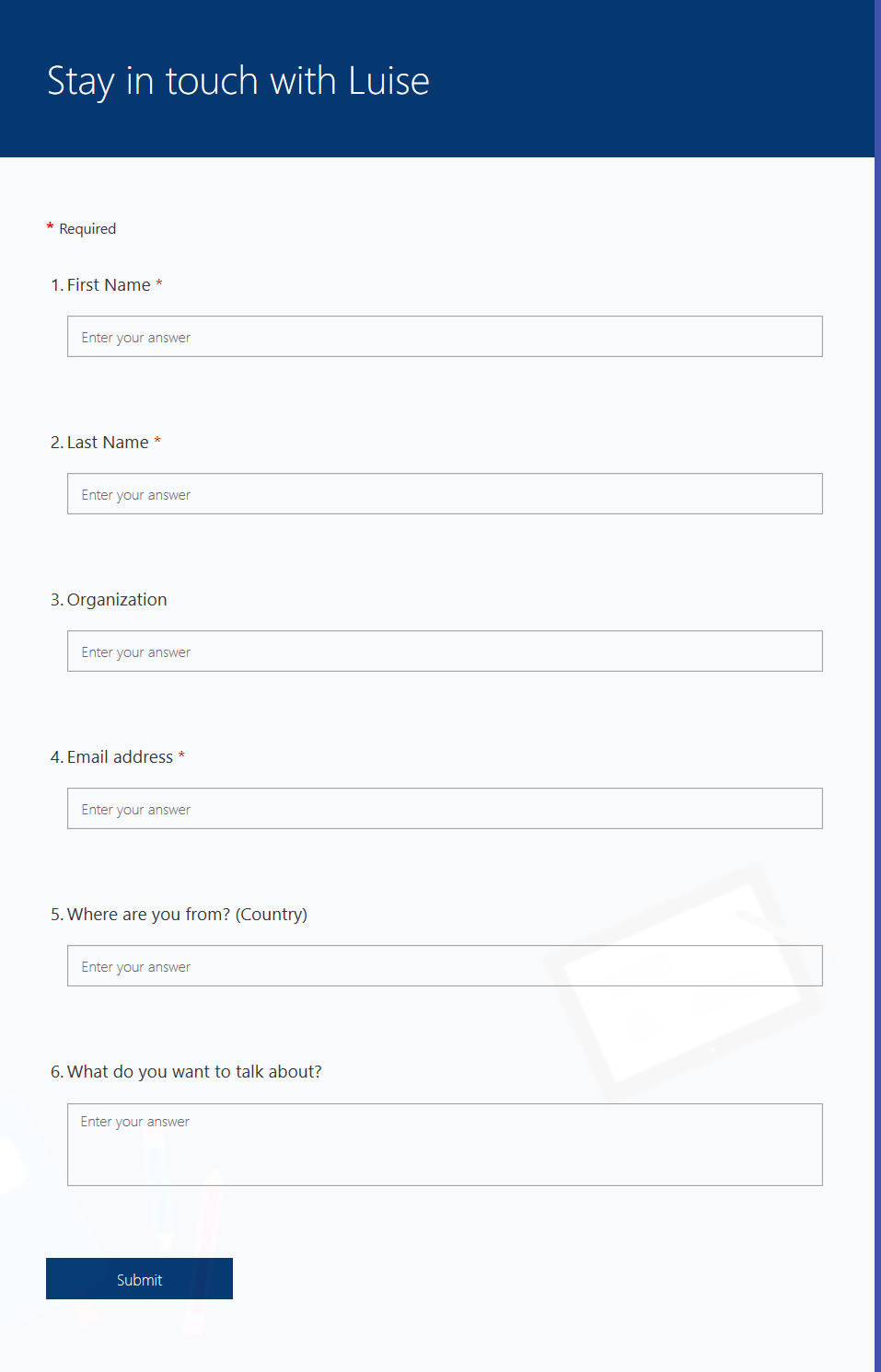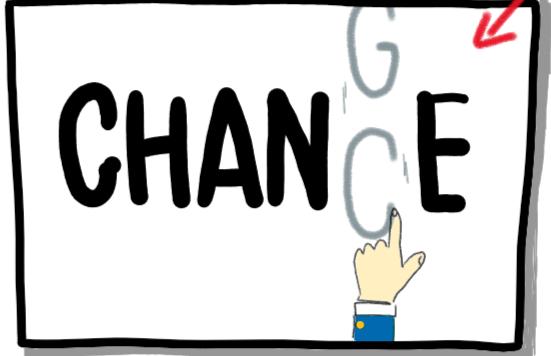Office 365 as an IT-only project – what could possibly go wrong?!
Note: I did a session with Michael Roth on based on this blog post at #Office365UGHH — please connect with and follow him as well.
If you want to run your Office 365 project like an usual IT project we just wanted to send you a non misunderstandable message:
ARE YOU NUTS?
We know, we know, you ran a lot of projects, new Office Versions and operating systems, you migrated data and perhaps not everything went as planned, but work is what happens to you, while you are busy making other plans, right?
So what could possibly go wrong if you just tried to continue how you treat your projects? As we have SOME experiences with projects, we collected some bad causes for you.
CONFLICT OF OBJECTIVES

If we treated our Office365 project like an IT only project we for sure create some conflicts of objectives between IT department and business departments.
- IT department one the one hand needs to ensure a stable, smooth operation. All key imgs (KPIs) and processes are geared to this and favor an attitude and habits that permit as few errors as possible by not experimenting and not experiencing something new. We are sure you are super familiar to that quote “ Never change a running system. “
- Business departments on the other hand do not only need a running system but also freedom and room to ideate, innovate and create new business opportunities and even change the way they do business. Without this change, business was stuck in operations but desperately needs ability to do some strategic work as well. This is only possible, if trying out, making errors, not running smooth is an option, too.
→This conflict leads to false assumptions in IT what business could need and we don’t take business needs into account.
CONFLICT OF SCOPE

These wrong assumptions lead us to the next point. If we in IT just think about rolling out a new version of Office, users will perceive Office 365 as a new version like Office 2010 was newer than 2003. For sure, we got a new nice UI (and still some employees struggle with using it or asked IT to install add/ins to make Office 2010 look like Office 2003). So we got a few new features and we didn’t need to change our ways to work.
With Office 365, we need to transform business to drive digital transformation, and we need to make sure that we don’t just rebuild all those dysfunctional structures and unhealthy working habits in the Cloud. We can’t win the game if we don’t empower business departments and IT department itself to really change their way to run the company.
SCRATCHING THE SURFACE
 If we focus on new features, we are pretty sure that you can make a huge list of great features and perhaps you feel like a true communication mastermind by getting your Corporate Communications department on board and they write an article about the 10 hottest features in the new Office?
If we focus on new features, we are pretty sure that you can make a huge list of great features and perhaps you feel like a true communication mastermind by getting your Corporate Communications department on board and they write an article about the 10 hottest features in the new Office?#SorryNotSorry, this again is not what is called “user centricity”. We need to take structures and processes into account, because if we only take care about some superficial new features, we don’t dig to the root of our working issues. Scratching on the surface can’t solve complex problems.
TRAINING CONCEPT
 Just scratching the surface when it comes to new possibilities results in a training concept that doesn’t fit to the DNA of Office 365: An evergreen Software As a Service doesn’t need a one-time in person training, but a diversified approach. First, users need to understand what is the purpose of Office 365 and which problems we can solve with it and which solutions we can just support with some nicer apps. We heard it all before: Never throw tech solutions on people problems 🙂
Just scratching the surface when it comes to new possibilities results in a training concept that doesn’t fit to the DNA of Office 365: An evergreen Software As a Service doesn’t need a one-time in person training, but a diversified approach. First, users need to understand what is the purpose of Office 365 and which problems we can solve with it and which solutions we can just support with some nicer apps. We heard it all before: Never throw tech solutions on people problems 🙂After a basic understanding they need to be empowered to evolve their structures and processes and ways of working and they need to be inspired to get a curious self-learning approach.
NO EMBRACE-CHANGE-MINDSET
 As if this wasn’t enough, we do not inspire employees to think out of the box and we don’t educate them to be part of solutions. Critical thinking, which is one of the most important skills, needs to be fostered and tends to degenerate.
As if this wasn’t enough, we do not inspire employees to think out of the box and we don’t educate them to be part of solutions. Critical thinking, which is one of the most important skills, needs to be fostered and tends to degenerate.DEEPENING THAT CHASM /
 By not learning and taking care about the needs of business departments, we deepen that chasm that has been growing and growing between IT and the other departments for decades.
By not learning and taking care about the needs of business departments, we deepen that chasm that has been growing and growing between IT and the other departments for decades.You know, when admins don’t even care about being just a little bit discrete when rolling their eyes and making jokes about so-called dumbest assumable users — and business users hate the IT guys just because they seem to just say NO to any request.
So IT becomes and stays the „Guardian of the Status Quo”, while the business departments fight against IT.
IT — like any other service department — should enable the value chain in the company which is only possible when understanding and streamlining business processes.
NO DIGITAL TRANSFORMATION
 Can we really drive digital transformation without a proper mindset, the right usage of the right (secure) tools and mature processes? Not at all! Information siloes, old processes in new tools and employees that wait and suffer instead of changing themselves are the enemies of change. Is Office 365 the answer to all our problems? NO! It’s just one building block but a really great opportunity to rethink about hierarchy, information architecture, structure and processes.
Can we really drive digital transformation without a proper mindset, the right usage of the right (secure) tools and mature processes? Not at all! Information siloes, old processes in new tools and employees that wait and suffer instead of changing themselves are the enemies of change. Is Office 365 the answer to all our problems? NO! It’s just one building block but a really great opportunity to rethink about hierarchy, information architecture, structure and processes.NO LEADERSHIP — NO ROLEMODELS — LACK OF ADOPTION
 Proper adoption needs role models and — best case: commitment by C-Level. If we don’t care about sponsorship (please don’t confuse this with “having budget”) and executive support, employees don’t see whom they should follow. Leading transformation by example is crucial is we make work and relationships even more visible wit Office 365.
Proper adoption needs role models and — best case: commitment by C-Level. If we don’t care about sponsorship (please don’t confuse this with “having budget”) and executive support, employees don’t see whom they should follow. Leading transformation by example is crucial is we make work and relationships even more visible wit Office 365.SAME OLD THINKING — SAME OLD RESULTS
 The way we thought about a user’s work (dealing with mail, nested folders, unable to retrieve information in a reasonable time, being under stress because assuming to need to reply to anything within minutes but still rather remain busy with being busy than providing value to the company by making customers happy) made them behave like they do. They behaved to survive in the structures we built for them. To fix that issue, we do not need to “fix the user” but to fix that system. If a plant doesn’t grow, you won’t pull it towards the right direction but take care about circumstances and proper environment like more light, less water etc. Same applies to humans.
The way we thought about a user’s work (dealing with mail, nested folders, unable to retrieve information in a reasonable time, being under stress because assuming to need to reply to anything within minutes but still rather remain busy with being busy than providing value to the company by making customers happy) made them behave like they do. They behaved to survive in the structures we built for them. To fix that issue, we do not need to “fix the user” but to fix that system. If a plant doesn’t grow, you won’t pull it towards the right direction but take care about circumstances and proper environment like more light, less water etc. Same applies to humans.SHADOW IT
If our project is not aligned to business challenges and business goals, if we don’t care about the right learning approach and adoption, employees will choose other tools, that fit their needs. This makes Shadow IT solutions even more likely — which is a security issue as well. Instead of providing, managing and consulting a secure solution, IT is the last one who knows about cloud-services that get used.
WAIT — WHAT SHALL WE DO INSTEAD?
 Evolve a holistic view on your organization: It‘s not IT vs. Business, but a
#bettertogether scenario
Evolve a holistic view on your organization: It‘s not IT vs. Business, but a
#bettertogether scenarioAdapt processes and structures so digital transformation may happen.
Fix the system — not the user
CALL FOR FEEDBACK
Please clap if you like this post, follow me and https://www.medium.com/@Gezeitenbrand. What are your thoughts? We are super keen on listening to your feedback and do another session on that crucial topic as well.
You May Also Like
Manage your contacts during events with Microsoft Flow
As I travel really often to speak at or just attend conferences, I wanted a smooth workflow to capture contact data of the persons I meet during an event and make sure that I catch up with them later. …
On my way to become a Power User
Maybe you have been following my learning journey on the way to becoming a PowerUser for a while. If not, these articles can help: how it feels to create my very first #MicrosoftFlow working hours …
Using Microsoft Flow to automate my process of sending stickers…
It all started with my nice idea of sketching some stickers and I offered on twitter to send those stickers for free. Never expected that amount of direct messages and replies, so I took that as a …





